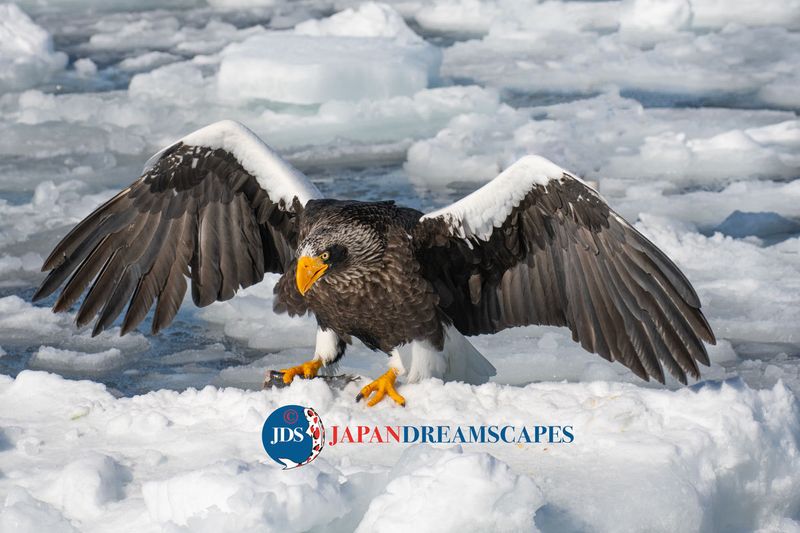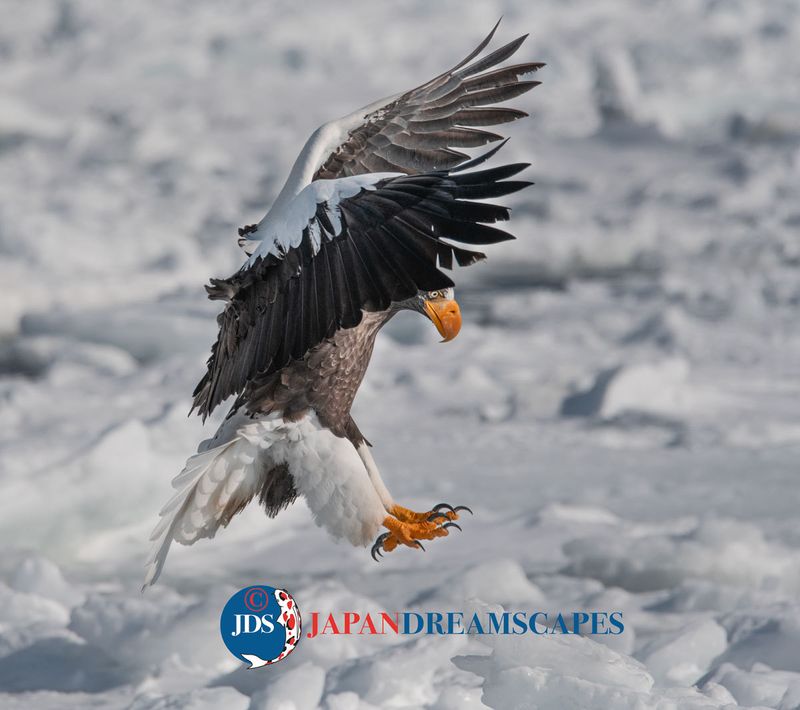Jul 5, 2023
Hokkaido, Rausu, and Steller's Sea Eagles
Gallery

The Steller’s Sea Eagle is the most massively huge raptor on our planet, weighing 9+ kilograms (20 pounds) with a wingspan of 2.7 meters (over 8 feet). This raptor’s natural habitat in the winter is pack ice which some ride down from the Kamchatka peninsula while others follow the coastline of Korea, but they all make their way to Hokkaido, Japan to the rich fishing grounds and freedom! Sorry, pun very much intended. When I go to photograph the Steller’s Sea Eagles, I have a minimum of three scheduled charter cruises booked with zodiac boats as a back up if the pack ice is close to shore and the water is like glass. It’s not often that I go out in zodiacs, perhaps once every three years. The pack ice is usually not that close to shore, and the weather can be rough in the region. On some days due to weather conditions, there’s no pack ice visible, and if you were to ask the majority of people in the area, they will respond, “It’s gone.” I can assure you the pack ice is not gone, it’s simply sunk during the storm, and once the storm recedes, the pack ice will resurface. And you don’t want to be stuck out on pack ice in rough weather, or just after the storm subsides. Some of my Hokkaido colleagues and I have seen foolish people do it, just before the required rescues in those cases. You need to know the region like the back of your hand. Believe me, you don’t want to be stuck in Rausu when the boats don’t go out. There are very few things to do there: 1) catch a boat to photograph raptors, 2) go to the onsen, or 3) get a hotel room and sleep. No, thank you. Even if it’s foul weather, I’d rather be out in the field photographing. In spring or autumn, I stay in Rausu, but never in the winter. I’ve seen the road closed for an entire day, and with one road in and one road out in the winter, it’s a one horse town. In total, it’s shut down an entire week a year, almost exclusively in the winter. I don’t consult magic eight balls. I go in when the weather is good and enjoy a complete day of raptor photography. I’ve been doing this for over two decades.

I never thought I would call Japan my home, but after 20 years I understand the beauty and appeal of Land of the Rising Sun. Part of my affection for Japan stems from my bride, Manami who introduced me to the essence of this magical land. As an amateur historian and sociologist, the uniqueness of Japan’s past captured my heart and soul, bonding me to the society and culture that is now a part of me. This society has embraced me, and I am no longer a visitor, I have recast myself as a cultural hybrid, always updating my identity with the rich cultural information from the past into the present, and, invariably, the future.



0 Comments